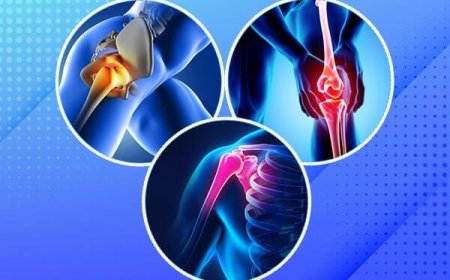How does ivermectin work in the human body?
Ivermectin is a potent antiparasitic agent with a highly selective mechanism of action.

Buy Ivermectin Online is a powerful antiparasitic medication that has been widely used in both human and veterinary medicine for over four decades. Originally developed in the late 1970s and approved for human use in the 1980s, ivermectin has revolutionized the treatment of many parasitic diseases, especially in tropical and developing regions. While it gained recent attention during the COVID-19 pandemic, its primary use remains the treatment of parasitic infections such as onchocerciasis (river blindness), strongyloidiasis, scabies, and lice.
To understand how ivermectin works in the human body, we must delve into its pharmacological action, how it interacts with the nervous system of parasites, how it is metabolized in humans, and its broader effects, benefits, and limitations.
1. What Is Ivermectin?
Ivermectin belongs to a class of medications known as macrocyclic lactones, derived from avermectinscompounds produced by the bacterium Streptomyces avermitilis. It is available in oral tablet form, topical lotions, creams, and injections (mainly for veterinary use). Ivermectin works by interfering with the nervous system of parasites, ultimately killing or paralyzing them without harming the human host.
2. Mechanism of Action in Parasites
The primary mechanism by which ivermectin kills parasites involves targeting their glutamate-gated chloride channelsspecialized ion channels in the nerve and muscle cells of invertebrates. Here's how it works:
-
Binding to Ion Channels: Ivermectin binds selectively and with high affinity to glutamate-gated chloride channels found in the nerve and muscle cells of invertebrates (including parasitic worms and arthropods like lice and mites).
-
Increased Chloride Ion Influx: This binding increases the permeability of the cell membrane to chloride ions, which leads to an influx of these negatively charged ions into the cells.
-
Hyperpolarization and Paralysis: The influx of chloride ions hyperpolarizes the cell, making it less likely to fire. This results in paralysis of the parasite's muscle and nerve function, leading to its immobilization.
-
Death of the Parasite: Because the parasite cannot move, feed, or maintain internal function, it eventually dies, and the body eliminates it.
Importantly, mammalsincluding humansdo not have glutamate-gated chloride channels in the same way parasites do. This gives ivermectin its selective toxicity: it kills parasites without causing significant harm to the host at prescribed doses.
3. Effects on Other Parasite Nervous System Receptors
In addition to glutamate-gated channels, ivermectin also affects gamma-aminobutyric acid (GABA)-gated chloride channels, which are present in some parasites. In vertebrates, GABA receptors are located in the central nervous system (CNS), but ivermectin does not usually cross the blood-brain barrier (BBB) in significant quantities. This means that in humans, it rarely causes effects on the central nervous system unless the BBB is compromised.
4. Metabolism and Pharmacokinetics in Humans
Once ingested, ivermectin undergoes absorption, metabolism, and excretion through the following steps:
Absorption:
-
When taken orally, ivermectin is absorbed via the gastrointestinal tract.
-
Peak plasma concentrations are usually reached within 45 hours after ingestion.
-
The presence of fatty foods can enhance its absorption.
Distribution:
-
Ivermectin is highly lipophilic (fat-soluble), allowing it to distribute well into fat tissues.
-
It binds strongly to plasma proteins, particularly albumin.
-
The drug is mostly found in the liver, adipose tissue, and skin.
Metabolism:
-
Ivermectin is primarily metabolized by the liver, especially by the enzyme CYP3A4, into various metabolites.
-
These metabolites retain some antiparasitic activity.
Excretion:
-
Around 90% of the drug and its metabolites are excreted through feces, with minimal renal excretion.
-
The half-life of ivermectin in humans is approximately 12 to 36 hours, depending on individual metabolism and dosage.
5. Conditions Treated by Ivermectin
Ivermectin is FDA-approved or widely used for the treatment of several parasitic infections:
-
Onchocerciasis (River Blindness): Kills microfilariae (immature worms) of Onchocerca volvulus.
-
Strongyloidiasis: Treats infections caused by the nematode Strongyloides stercoralis.
-
Scabies: A systemic option for severe or crusted scabies, especially when topical treatments fail.
-
Lice: Effective in resistant cases of head lice.
-
Lymphatic Filariasis: Used as part of mass drug administration programs.
-
Other off-label uses: Rosacea (topical), myiasis (infestation by fly larvae), and in some cases, protozoal infections.
6. Safety and Side Effects in Humans
Ivermectin is considered very safe when used at recommended doses. However, like all medications, it may have side effects:
Common Side Effects:
-
Nausea, vomiting
-
Diarrhea
-
Dizziness
-
Skin rash or itching
-
Muscle aches
Rare but Serious Effects:
-
Low blood pressure
-
Seizures
-
Liver enzyme elevation
-
Allergic reactions, especially in patients with heavy parasite loads due to the Mazzotti reaction (immune response to dying microfilariae)
Contraindications and Cautions:
-
Not recommended in children under 15 kg
-
Use with caution in individuals with impaired blood-brain barrier (e.g., meningitis)
-
Drug interactions with CYP3A4 inhibitors (e.g., ketoconazole, clarithromycin)
7. Ivermectin and the Blood-Brain Barrier
One key reason ivermectin is safe for humans is its limited penetration into the brain due to the P-glycoprotein efflux pump. This protein pump prevents ivermectin from crossing the BBB. However, in individuals with genetic mutations (such as those in the MDR1 gene) or BBB damage, ivermectin may reach the brain and cause neurotoxicity.
8. Ivermectin During the COVID-19 Pandemic
During the COVID-19 pandemic, ivermectin was investigated for its potential antiviral effects. Some in vitro studies suggested it might inhibit replication of SARS-CoV-2. However:
-
The doses required to achieve antiviral effects in the lab were much higher than safe levels for human use.
-
Large clinical trials showed no clear benefit in treating or preventing COVID-19.
-
Leading health organizations, including the WHO and FDA, advise against using ivermectin for COVID-19 outside clinical trials.
9. Resistance and Limitations
With widespread use, parasite resistance to ivermectin has begun to emerge, particularly in veterinary settings and in regions with mass drug administration. Mechanisms of resistance include:
-
Genetic mutations in glutamate-gated chloride channel genes
-
Upregulation of efflux transporters like P-glycoprotein
Researchers are now exploring combination therapies and new agents to combat resistance.
Conclusion
Ivermectin is a potent antiparasitic agent with a highly selective mechanism of action. By targeting ion channels specific to parasites, it causes paralysis and death of the invading organisms while sparing human cells. It has a strong safety record, is affordable, and continues to be a cornerstone in the fight against neglected tropical diseases. While it gained undue attention as a potential antiviral during the pandemic, its true power lies in its ability to control parasitic infections that afflict millions of people worldwide. Continued responsible use and further research will ensure that ivermectin remains an effective tool for global health.































